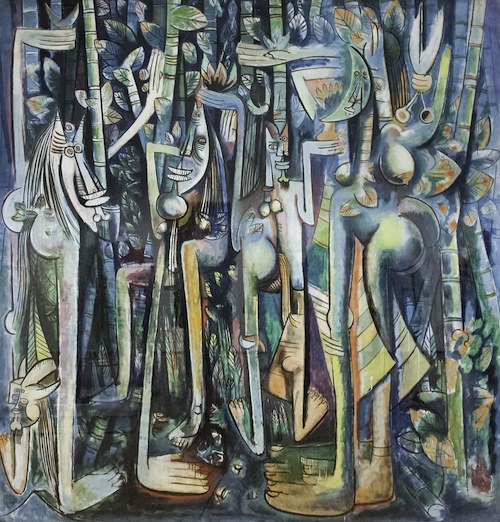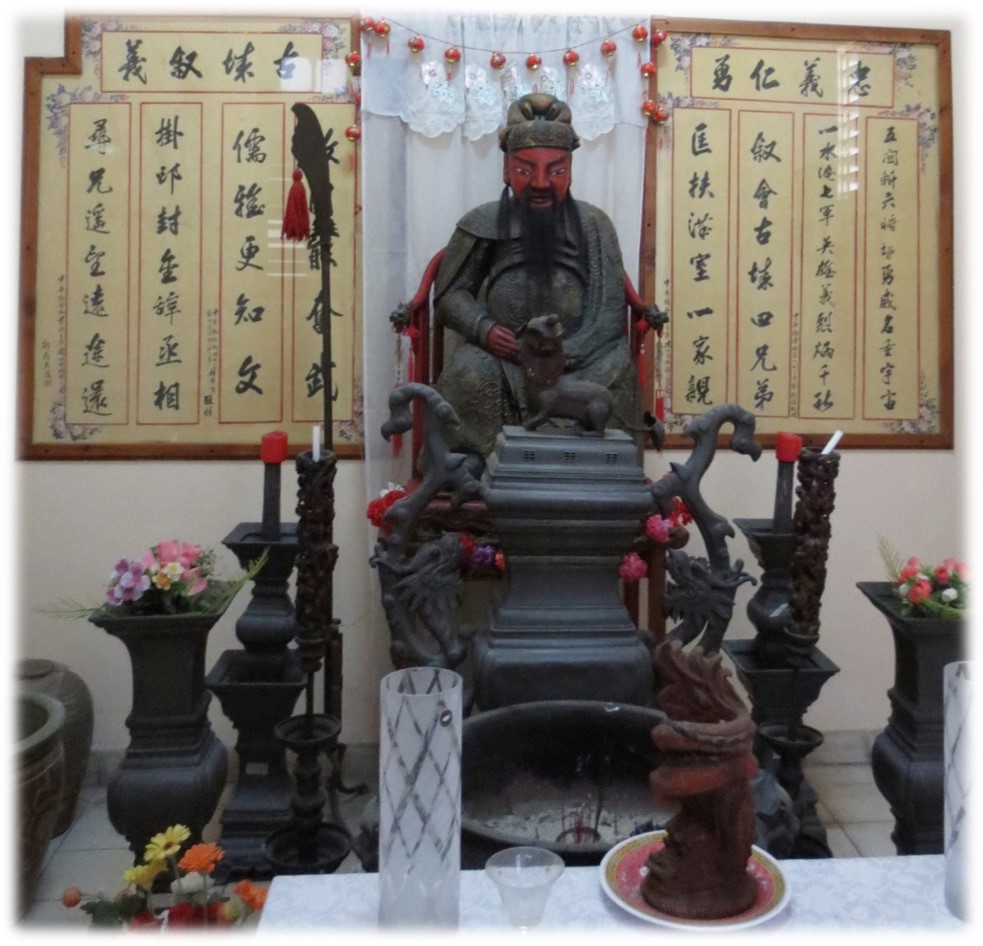
A shrine dedicated to Guan Gong, known in Cuba as San Fan Con. Located in Casino Chung Wah in Havana’s China town.
Image courtesy of Dr. Martin Tsang
Main
Books & Articles
Selection of Monographs & Articles Selection of BooksExternal Resources
External Archival Collections & Online Databases Chinese Cuban Genealogy Resources Newspapers PhotographyWifredo Lam
Biographical Note At the Lowe Art Museum Martha Frayde Barraqué Papers Selection of Books
Juan A. Villanueva
- Cuban Heritage & Spanish Language Collections Archivist
- j.villanueva5@umiami.edu
- (305) 284-4008

Amanda Moreno
- Esperanza Bravo de Varona Chair and Director of the Cuban Heritage Collection
- a.moreno8@umiami.edu
- (305) 284-5854

Katherine Villa
- Peer Research Consultant / UGrow Fellow 2020-21
- kkv8@miami.edu
- (305) x
Rodríguez Coronel, Rogelio. El Rastro Chino En La Literatura Cubana. Editorial UH, 2019.
Quesada, Gonzalo de. Los chinos y la revolución cubana. La Habana: [Ucar, García], 1946.
Pérez de la Riva, Juan. Los culíes chinos en Cuba, 1847-1880: contribución al estudio de la inmigración contratada en el Caribe. La Habana: Editorial de Ciencias Sociales, 2000.
Cuba Vega, Lidia, and Lidia León Castellanos. Memorias del Programa de Formación de Jóvenes Chinos en Cuba: (septiembre, 2006-julio, 2016). La Habana: Editorial UH, 2016.
Jiménez Pastrana, Juan. Los chinos en la historia de Cuba, 1847-1930. La Habana: Editorial de Ciencias Sociales, 1983.
Jiménez Pastrana, Juan. Los chinos en las luchas por la liberacion cubana: 1847-1930. La Habana: Instituto de Historia, 1963.
Espinosa Luis, Mitzi. Huellas de China en este lado del Atlántico. La Habana, Cuba: Editorial José Martí, 2016.
Herrera Jerez, Miriam, and Mario Castillo Santana. De la memoria a la vida pública: identidades, espacios y jerarquías de los chinos en La Habana republicana (1902-1968). La Habana, Cuba: Centro de Investigación y Desarrollo de la Cultura Cubana Juan Marinello, 2003.
Crespo Villate, Mercedes. Creencias y tradiciones chinas en Cuba. La Habana: Ediciones Extramuros, 2016.
Cosme Baños, Pedro. Los chinos en Regla, 1847-2012. Segunda edición. La Habana: Editora Historia, 2013.
Castro Caso, Miriam. China en Cuba: herederos del Celeste Imperio. La Habana, Cuba: Editorial de Ciencias Sociales, 2018.
China. Zong li ge guo shi wu ya men. Report of the Commission Sent by China to Ascertain the Condition of Chinese Coolies in Cuba. Ch'eng Wen Pub. Co., 1970.
Baltar Rodríguez, José. Los chinos de Cuba: apuntes etnográficos. Ciudad de La Habana: Fundación Fernando Ortiz, 1997.
Hu-DeHart, Evelyn. "The Chinese Presence in Cuba: Heroic Past, Uncertain Present, Open Future." Contemporary Chinese Diasporas. Palgrave, Singapore, 2017. 349-368.
Benjamín N Narváez, Subaltern Unity? Chinese and Afro-Cubans in Nineteenth-Century Cuba, Journal of Social History, Volume 51, Issue 4, Summer 2018, Pages 869–898.
López, Kathleen. "Approach to Researching Early Twentieth-Century Chinese Migration to Cuba." Chinese Overseas: Migration, Research and Documentation (2007): 167.
López, Kathleen (2005). Migrants between empires and nations: The chinese in cuba, 1874–1959 . University of Michigan. ProQuest Dissertations Publishing, 2005.
Chinese Influences on Life and Religion in Cuba by Dr. Martin Tsang for UM News
A Chinese-Cuban Secret Society in Havana by Dr. Martin Tsang for UM News
Tsang, Martin, "Con la Mocha al Cuello: The Emergence and Negotiation of Afro-Chinese Religion in Cuba" (2014). FIU Electronic Theses and Dissertations. 1247.
Perez Fernandez, Rolando Antonio. “The Chinese Community and the Corneta China: Two Divergent Paths in Cuba.” Yearbook for traditional music 46 (2014): 62–88.
Kadetz, P. I., and J. Perdomo. "Slaves, Revolutions, Embargoes, and Needles: The Political Economy of Chinese Medicine in Cuba." Asian Medicine: Tradition and Modernity 6 (2011): 95-122
Chiu, Lisa. "A Short History of the Chinese in Cuba." ThoughtCo, Aug. 27, 2020.
Charmaine Au-Yeung “Privileged Access Through the Eyes of the Chinese-Cubans” jhiblog, September 22, 2021.
Fundación Fernando Ortiz. Catauro: revista cubana de antropologiá. La Habana: Fundación Fernando Ortiz, 1999. See Special Edition on Chinese Cubans.
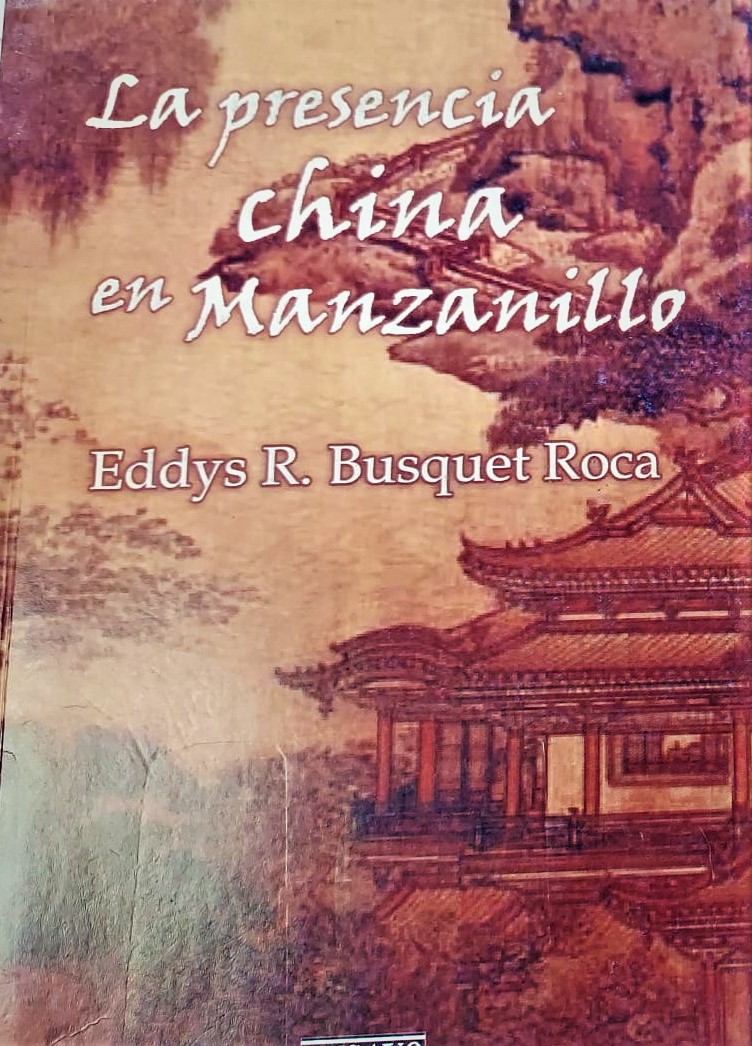
Abdala Pupo, Oscar Luis. Los chinos en el oriente Cubano: apuntes sobre la presencia China en el siglo XIX. Ediciones Santiago, 2015.
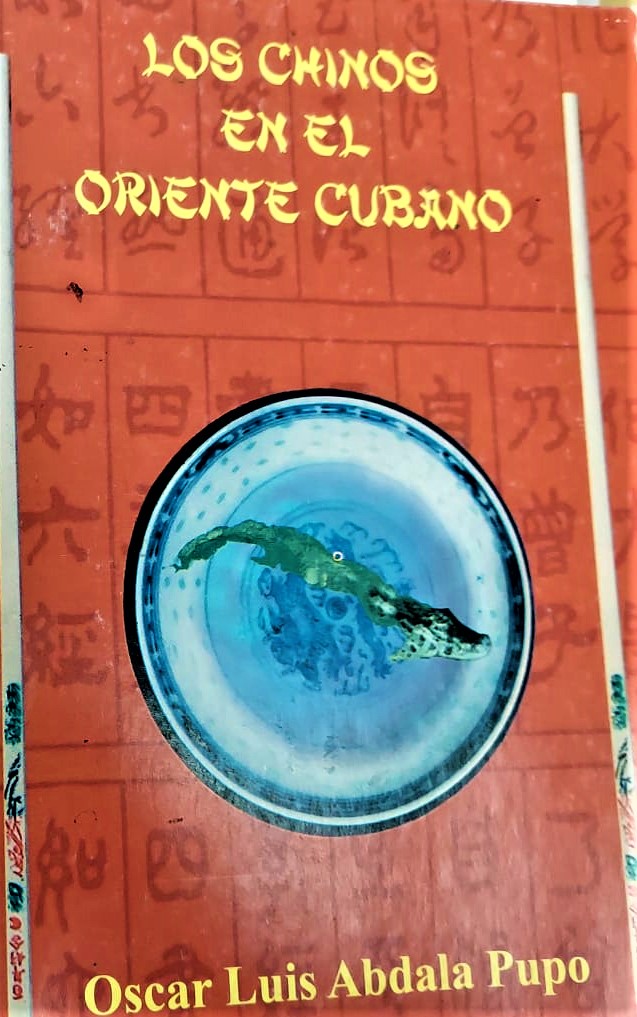
"The archive continues until the 1970s and records the Chinese community in Cuba and is rich with photos. This massive collection, from the archive of James and Ana Melikian Collection, is probably the largest one in private hands concerning Chinese in Cuba. At present, the physical collection contains over 1,341 records and about 8,000-9,000 pages." Video overview of the collection.
Migration to New Worlds Discover the motives, aspirations, realities and personal hardships for European and Asian migrants during two centuries of global migration.
A guide to tracing Chinese genealogy: How to Find My Chinese Ancestors
Chinese Newspapers in Southeast Asia Includes a comprehensive collection of scanned Chinese newspapers published in Singapore and Malaysia.
The International Digital Ephemera Project Latin American and Caribbean Periodicals UCLA Library, Explore the issues of the Cuban-Chinese publication Man Sen Yat Po for the years between 1947 and 1958
Guide to the Chung Sai Yat Po Newspaper Collection Chung Sai Yat Po was published in San Francisco from Feb. 1900 to 1951. It has a long publishing history and almost all its issues survived. Extent 14 microform reels 1,460 online items
Pok Chi Lau is Professor Emeritus of PhotoMedia in the Department of Design at the University of Kansas. He is a documentary photographer whose work on migration focuses on the Chinese Diaspora in the Americas, Cuba, and Malaysia and now Myanmar.
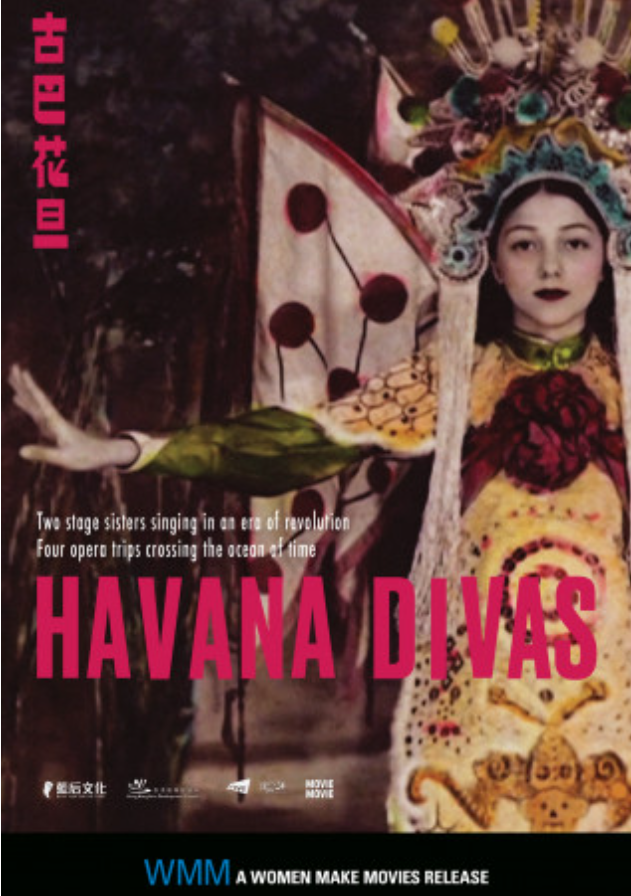
Offering a window into the experience of Chinese migration to Cuba, HAVANA DIVAS follows two Cantonese opera singers who perform for decades in Cuba before, and during, Fidel Castro’s revolution.
Cuban Chinese, Caridad Amaran as a Cantonese Opera Performer, by Pok Chi Lau 刘博智
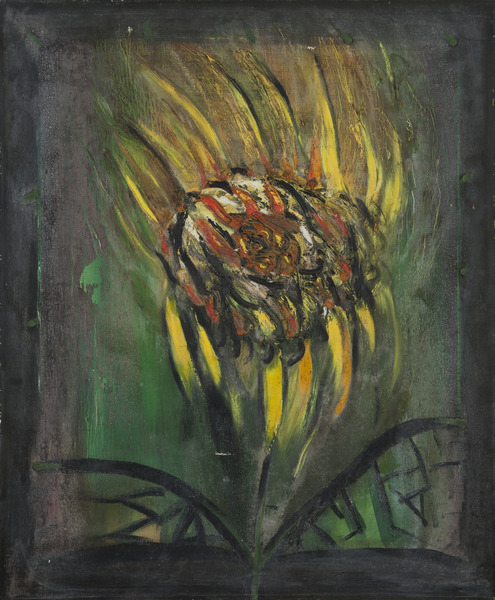
Girasol (Sunflower), 1996. Image courtesy of Cuban Art Resources
Flora Fong was born in Camagüey, Cuba in 1949. "Belonging to the first generation of Cuban plastic artists to emerge on the island after the 1959 Revolution, Flora Fong’s work evolved during one of the most interesting periods for art in the Greater Antilles. Her work reconciles the intense energy of the tropical environment in which she was born with philosophical concepts inherited from her Chinese ancestors." (https://www.revistapanorama.com/en/flora-fong-from-cuba-to-china-and-back-again-2/)
Books and archives in the Cuban Heritage Collection:
Fong, Flora. Nube de otoño. La Habana Vieja, Cuba: Flora Fong García, 1997.
Fong, Flora. Entre décadas. Havana: Galería La Acacia, 2001.
Barnet, Miguel, and Flora Fong. Poemas chinos. La Habana, Cuba: Casa Editora Abril, 2018.
Image of Flora Fong, 1975, "Flora Fong, un inesperado encuentro con sus familiares."
After a brief imprisonment in Martinique, Lam returned to Cuba in 1941. This is when Lam began to evolve his work to include his interpretations of Afro-Cuban religious motifs and images which are paradigmatically visible in his 1943 painting, La Jungla (The Jungle). Lam's focus had sharpened after his meeting Aimé Césairé, the author considered to be one of the founders of the Négritude movement, in Martinique. "In La Jungla (1943), Lam depicts Santería through the recurring image of the femme cheval (or “horse-woman”)... she appeals to the Santería practice of possesions by the orishas (“divinities or spirits who act as intermediaries between humans and the forces of nature”) while also invoking a feminine energy that is key to Lam’s Négritude and the cultural syncretism of La Jungla (1943)."(https://medium.com/lotus-fruit/exploring-identity-through-wifredo-lams-la-jungla-1943-211056037079) This work has often been compared to Picasso's representations of the female figure.
Lam continued to paint and develop work influenced by African imagery and religions, as well as the complex racial history of Cuba and colonialism. He took residence in Paris in 1952 and his work has been exhibited globally to critical acclaim and widely studied. He died in 1982. In 1983, the gallery Centro de Arte Contemporáneo Wifredo Lam opened in Havana and has become a formidable institution of art appreciation and research in Cuba.
References and links:
- https://www.khanacademy.org/humanities/ap-art-history/later-europe-and-americas/modernity-ap/a/lam-the-jungle
- Sato, Paula. “Wifredo Lam, the Shango Priestess, and the Femme Cheval.” Journal of International Women’s Studies 17 (June 2016): 92. http://vc.bridgew.edu/jiws/vol17/iss3/8.
View digital copies of Lam's works held by the Lowe Art Museum: emuseum1.as.miami.edu/people/2997/wifredo-lam/objects
The Cuban Heritage Collection has recently acquired the exhibition's print book: Wifredo Lam: The Imagination at Work.

